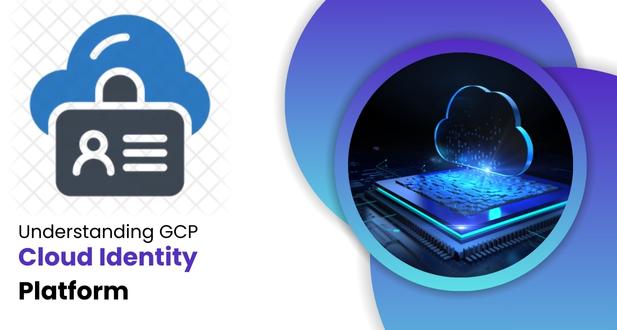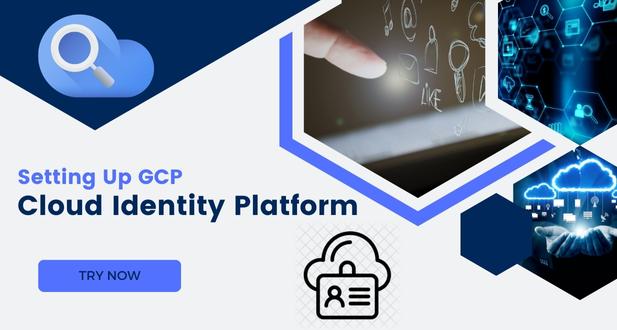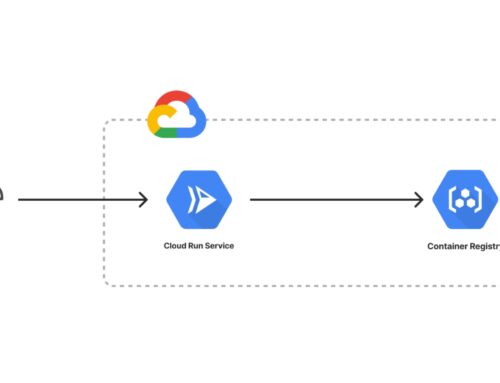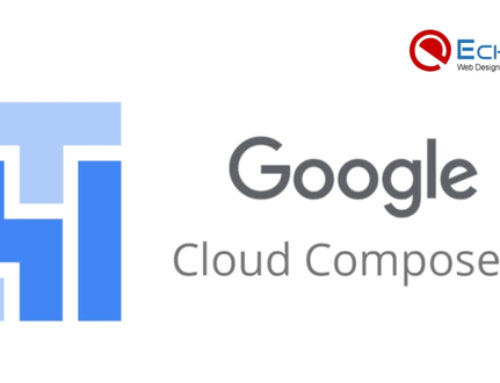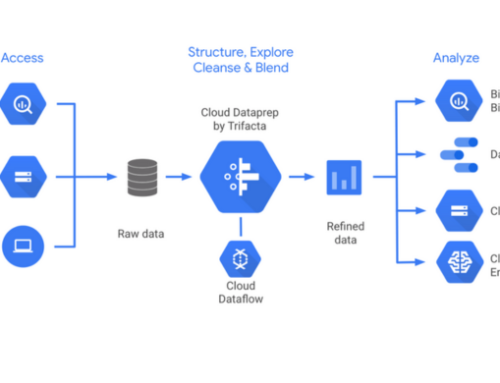Introduction
In the rapidly evolving landscape of cloud computing, identity management is a cornerstone for ensuring secure and efficient access to resources. The GCP Cloud Identity Platform stands as a robust solution designed to address the intricacies of identity management within the Google Cloud environment.
Definition of GCP Cloud Identity Platform:
At its core, the GCP Cloud Identity Platform is a comprehensive identity and access management service offered by Google Cloud. It provides organizations with a unified platform to manage user identities, control access to applications and resources, and implement robust security measures. With a suite of features, the platform streamlines the complexities of identity management in cloud-based infrastructures.
Overview of Its Role in Identity Management:
The GCP Cloud Identity Platform plays a multifaceted role in identity management. It serves as the centralized hub for defining and managing user identities, facilitating secure authentication and authorization processes, and enforcing policies to govern access to various services within the Google Cloud ecosystem. From single sign-on (SSO) to multi-factor authentication (MFA), the platform offers a spectrum of tools to fortify the security posture of organizations.
Importance of a Robust Identity Platform in Cloud Environments:
In the dynamic and distributed landscape of cloud computing, where services are often decentralized and accessed from various locations, the significance of a robust identity platform cannot be overstated. A well-established identity management system ensures that only authorized individuals gain access to sensitive information and resources, reducing the risk of unauthorized access, data breaches, and other security threats. Furthermore, a streamlined identity management process enhances operational efficiency, simplifying user onboarding and offboarding and promoting a seamless user experience.
Understanding GCP Cloud Identity Platform
GCP Cloud Identity Platform offers a comprehensive suite of features and capabilities that go beyond traditional identity management, providing organizations with a powerful toolset to secure, manage, and optimize user access within the Google Cloud ecosystem.
In-depth Exploration of the Features and Capabilities:
The platform’s rich feature set encompasses a range of functionalities designed to meet the diverse needs of modern enterprises. From user provisioning and deprovisioning to policy enforcement and reporting, Cloud Identity Platform offers a centralized dashboard for managing the complete lifecycle of user identities. Advanced features include single sign-on (SSO), multi-factor authentication (MFA), and adaptive access controls, enhancing the overall security posture of organizations.
Overview of Authentication and Authorization Services:
Authentication and authorization form the backbone of any identity management system, and Cloud Identity Platform excels in providing robust solutions in these areas. With support for various authentication protocols, including OAuth 2.0 and OpenID Connect, the platform ensures secure and standardized authentication processes. Additionally, Cloud Identity Platform allows organizations to define fine-grained authorization policies, controlling access to resources based on user roles, groups, or other attributes.
Discussion on the Integration with Google Cloud:
One of the key strengths of GCP Cloud Identity Platform lies in its seamless integration with the broader Google Cloud ecosystem. Organizations leveraging Google Cloud services can harness the power of Cloud Identity Platform to centralize and streamline identity management across their cloud-based infrastructure. This integration ensures that user identities are managed consistently, and access controls are enforced uniformly across various Google Cloud services, fostering a cohesive and secure environment.
Moreover, Cloud Identity Platform’s integration extends beyond Google Cloud, supporting a hybrid identity approach. Organizations can integrate with on-premises LDAP directories or synchronize identities from existing systems, providing flexibility in deployment scenarios.
As organizations delve into the features and capabilities of GCP Cloud Identity Platform, they gain not only a robust identity management solution but also a strategic tool that enhances security, streamlines user management, and fosters a seamless integration with the broader Google Cloud ecosystem. The subsequent sections will guide users through the practical aspects of setting up and utilizing these features to establish a secure and efficient identity management framework.
As organizations continue to embrace cloud technologies, the GCP Cloud Identity Platform emerges as a pivotal tool in fortifying the security and efficiency of identity management. The subsequent sections will delve deeper into the platform’s components, setup procedures, and best practices for realizing its full potential in the context of modern cloud environments.
Key Components of GCP Cloud Identity Platform
GCP Cloud Identity Platform is a robust identity management solution comprising key components that collectively contribute to its versatility and effectiveness. Understanding these components is essential for organizations aiming to harness the full potential of the platform.
Identity Providers (IdPs) and Their Role:
Identity Providers play a pivotal role in the authentication process within the Cloud Identity Platform. IdPs are external systems or services that verify the identity of users and provide authentication tokens to access resources. Cloud Identity Platform supports a variety of IdPs, including popular ones like Google, Microsoft Azure AD, and other OpenID Connect (OIDC) compliant providers. This flexibility allows organizations to integrate their existing identity systems seamlessly, providing users with a unified and streamlined authentication experience.
User and Group Management:
Effective user and group management are fundamental aspects of any identity platform. Cloud Identity Platform offers robust tools for creating, organizing, and managing user accounts and groups. Administrators can define and assign roles and permissions based on organizational hierarchies and requirements. This centralized management ensures that access controls are consistent and easily scalable, simplifying the often complex task of overseeing user identities within an organization.
Multi-Factor Authentication (MFA) Options:
Enhancing security through Multi-Factor Authentication (MFA) is a critical aspect of identity management. Cloud Identity Platform supports various MFA options, including but not limited to time-based one-time passwords (TOTP), SMS-based verification, and security keys. This multi-layered approach adds an additional level of authentication beyond traditional username and password combinations, significantly bolstering the security posture of user access.
User Attributes and Schema Customization:
Cloud Identity Platform offers flexibility in managing user attributes, allowing organizations to tailor the identity schema to their specific needs. User attributes can include information such as job title, department, or custom fields relevant to the organization’s structure. This customization ensures that user identities are rich with context, facilitating more granular access controls and providing valuable information for reporting and auditing purposes.
Furthermore, schema customization allows organizations to extend the default set of attributes to meet unique requirements. This adaptability ensures that Cloud Identity Platform can seamlessly integrate into diverse organizational structures, accommodating the specific nuances of different industries and use cases.
In essence, the key components of GCP Cloud Identity Platform collectively form a robust foundation for secure, organized, and customizable identity management. The subsequent sections will guide organizations through the practical steps of setting up and configuring these components to establish a resilient and effective identity management framework within the Google Cloud environment.
Setting Up GCP Cloud Identity Platform
Setting up GCP Cloud Identity Platform involves a series of strategic steps to establish a secure and tailored identity management environment. This section will guide organizations through the essential configurations, ensuring a seamless integration into their Google Cloud ecosystem.
-
Project and Identity Configuration:
- Creating a GCP Project:
- Begin by creating a new project within the Google Cloud Console. This project serves as the container for all resources associated with Cloud Identity Platform.
- Set project identifiers, such as project name and ID, following best practices for organizational clarity.
- Enabling the Cloud Identity Platform API:
- Navigate to the API & Services section within the Google Cloud Console.
- Locate and enable the Cloud Identity Platform API to activate the platform’s functionality.
- Configuring Identity Sources:
- Define identity sources to establish connections with external Identity Providers (IdPs).
- Configure settings for specific IdPs, ensuring seamless authentication processes.
-
User and Group Management:
- Adding and Managing Users:
- Populate the user base by adding individual users to the Cloud Identity Platform.
- Define user attributes, including usernames, emails, and roles, aligning with organizational needs.
- Leverage automation tools for large-scale user provisioning, streamlining the onboarding process.
- Creating and Organizing Groups:
- Establish groups based on organizational structures, departments, or specific projects.
- Add users to groups to simplify role assignment and access control management.
- Utilize nested groups for hierarchical organization and efficient permission management.
- Defining Roles and Permissions:
- Define custom roles or leverage predefined roles to assign specific permissions.
- Align roles with organizational roles, streamlining access control.
- Ensure a principle of least privilege, granting users only the necessary permissions for their roles.
- Multi-Factor Authentication (MFA) Setup:
- Configuring MFA Options:
- Access the MFA settings within the Cloud Identity Platform.
- Configure MFA options based on organizational preferences, such as TOTP, SMS, or security keys.
- Customize MFA policies, specifying conditions under which MFA is required.
- Enforcing MFA for Enhanced Security:
- Establish policies enforcing MFA for specific user groups or under defined circumstances.
- Encourage users to complete the MFA setup during the onboarding process.
- Regularly audit MFA settings to ensure compliance with security standards.
- Customizing User Attributes and Schema:
- Tailoring User Attributes to Organizational Needs:
- Identify the necessary user attributes based on organizational requirements.
- Customize default attributes or create new ones to capture specific information.
- Ensure consistency in attribute naming conventions.
- Schema Customization for User Data:
- Explore the schema customization options within Cloud Identity Platform.
- Add or modify fields to enhance the depth of user information.
- Regularly review and update the schema to accommodate evolving organizational needs.
In conclusion, setting up GCP Cloud Identity Platform involves a structured approach to project and identity configuration, user and group management, MFA setup, and schema customization. Following these steps ensures a tailored, secure, and efficient identity management environment within the Google Cloud ecosystem. The subsequent sections will further guide organizations through the integration of Cloud Identity Platform with applications and the implementation of advanced security measures.
Integrating GCP Cloud Identity Platform with Applications
Integrating GCP Cloud Identity Platform with applications is a crucial step in establishing a seamless and secure identity management framework. This section will guide organizations through the process of setting up applications, understanding the user authentication flow, and implementing robust authorization policies.
- Application Setup:
- Registering Applications in the Cloud Identity Platform:
- Begin by registering each application within the Cloud Identity Platform.
- Access the Cloud Identity Platform console and navigate to the Applications section.
- Register applications, providing necessary details such as name, redirect URIs, and associated identity providers.
- Configuring OAuth 2.0 and OpenID Connect:
- For each registered application, configure OAuth 2.0 and OpenID Connect settings.
- Define scopes and permissions to control the level of access granted to users.
- Establish secure connections between applications and Cloud Identity Platform for authentication and authorization processes.
- User Authentication Flow:
- Explaining the User Authentication Process:
- Understand the sequence of events during the user authentication process.
- A user initiates authentication by accessing the application and providing credentials.
- The application communicates with Cloud Identity Platform to authenticate the user based on configured identity providers.
- Interaction Between Identity Providers, Applications, and Cloud Identity Platform:
- Identity providers play a central role in verifying user identities during authentication.
- Applications interact with Cloud Identity Platform to obtain authentication tokens and user information.
- Cloud Identity Platform acts as the broker, facilitating secure communication between identity providers and applications.
- Authorization Policies:
- Defining Authorization Policies:
- Establish clear authorization policies based on the principle of least privilege.
- Define roles and permissions for users within the Cloud Identity Platform.
- Tailor authorization policies to align with the specific needs of each application.
- Managing Access Control for Applications:
- Leverage Cloud Identity Platform to manage access control for various applications.
- Assign roles and permissions to users or groups based on their responsibilities.
- Regularly review and update access control policies to reflect changes in organizational structures or application requirements.
Effective integration of GCP Cloud Identity Platform with applications ensures that users can securely access resources while adhering to organizational access control policies. This seamless integration streamlines user experiences and enhances overall security.
In the subsequent sections, the focus will shift to security best practices, troubleshooting, and real-world implementation examples, providing organizations with a comprehensive understanding of how to optimize and maintain their identity management environment.
Security Best Practices
Ensuring the security of the GCP Cloud Identity Platform is paramount for safeguarding sensitive information and maintaining the integrity of identity management processes. Implementing robust security best practices is instrumental in achieving a resilient and secure identity management environment.
Overview of Security Considerations:
- Data Encryption:
- Prioritize data encryption at rest and in transit to protect sensitive information.
- Utilize secure communication protocols to encrypt data during transmission between identity providers, applications, and Cloud Identity Platform.
- Identity Source Security:
- Securely configure and manage identity sources to prevent unauthorized access.
- Regularly review and update settings for external identity providers, ensuring adherence to security standards.
- Access Control Policies:
- Implement well-defined access control policies to restrict access based on roles and permissions.
- Regularly audit and update these policies to align with organizational changes and evolving security requirements.
Encouraging Secure Password Practices:
- Enforce Strong Password Policies:
- Define and enforce password policies that require strong, complex passwords.
- Encourage users to create unique passwords and discourage password reuse.
- Multi-Factor Authentication (MFA):
- Promote the use of Multi-Factor Authentication (MFA) to add an additional layer of security.
- Make MFA mandatory for specific user groups or in high-security scenarios.
Monitoring and Auditing Identity-Related Activities:
- Identity Activity Logs:
- Regularly monitor and analyze identity activity logs provided by Cloud Identity Platform.
- Look for suspicious activities, failed authentication attempts, or unusual access patterns.
- Real-time Alerts:
- Set up real-time alerts for security events, ensuring prompt detection and response to potential security incidents.
- Configure alerts for activities such as multiple failed login attempts or unauthorized access.
- Regular Audits:
- Conduct periodic audits of user accounts, groups, and access controls.
- Review and validate user privileges to ensure they align with current job responsibilities.
By adhering to these security best practices, organizations can fortify their GCP Cloud Identity Platform against potential threats, unauthorized access, and other security vulnerabilities. In the subsequent sections, the focus will shift to troubleshooting and support, real-world implementation examples, and considerations for future developments and updates.
Troubleshooting and Support
Effectively troubleshooting issues and accessing reliable support resources are integral aspects of maintaining a healthy and resilient GCP Cloud Identity Platform. This section provides insights into common challenges encountered during setup and offers guidance on leveraging support resources.
Common Issues in Setup and Configuration:
- Authentication Failures:
- Investigate authentication failures by examining error messages and logs.
- Verify the correctness of identity provider configurations and ensure consistent user attributes.
- Application Integration Problems:
- Address issues related to application integration by verifying OAuth 2.0 and OpenID Connect configurations.
- Confirm that redirect URIs and client IDs are accurately configured for each registered application.
- Access Control Challenges:
- Troubleshoot access control problems by reviewing roles and permissions assignments.
- Ensure that authorization policies align with the organization’s requirements.
Accessing Support Resources and Documentation:
- Google Cloud Support:
- Reach out to Google Cloud Support for assistance with complex issues or critical incidents.
- Utilize Google Cloud’s support portal to submit tickets, access documentation, and engage with the support team.
- Documentation and Knowledge Base:
- Explore the comprehensive documentation provided by Google Cloud for Cloud Identity Platform.
- Leverage the knowledge base to find solutions to common problems and access best practices.
- Community Forums:
- Participate in community forums and discussion groups related to GCP Cloud Identity Platform.
- Engage with the community to seek advice, share experiences, and troubleshoot issues collaboratively.
By proactively addressing common issues and utilizing available support resources, organizations can minimize downtime, optimize their identity management setup, and ensure a smooth and secure operational environment. In the upcoming sections, real-world implementation examples and considerations for future developments and updates will be explored, providing organizations with a holistic understanding of GCP Cloud Identity Platform.
Future Developments and Updates
Google Cloud remains committed to the continuous enhancement of its services, including the GCP Cloud Identity Platform. This commitment is rooted in a proactive approach to addressing evolving industry needs, technological advancements, and feedback from the user community.
Google Cloud’s Commitment to Continuous Improvement:
- Iterative Updates:
- Expect iterative updates and improvements to the Cloud Identity Platform, addressing performance optimizations, security enhancements, and feature enrichments.
- User Feedback Integration:
- Google Cloud values user feedback as an essential driver for improvement.
- Regularly incorporate user suggestions and experiences to refine the platform’s functionality and user experience.
Potential Enhancements and Features on the Horizon:
- Advanced Security Measures:
- Anticipate the introduction of advanced security measures to address emerging threats and vulnerabilities.
- Enhancements may include new authentication options, improved access controls, and innovative security features.
- Integration Capabilities:
- Explore potential updates that enhance integration capabilities with a broader range of applications and identity providers.
- Improved interoperability and compatibility may be focal points for upcoming developments.
In summary, organizations leveraging the GCP Cloud Identity Platform can look forward to a future marked by continuous innovation and improvements. Google Cloud’s dedication to staying at the forefront of technology ensures that the platform evolves in tandem with industry trends, providing users with a robust and future-ready identity management solution.
Conclusion
In conclusion, the journey through GCP Cloud Identity Platform encompasses the establishment of a robust identity management framework within the Google Cloud ecosystem. As organizations navigate the intricacies of project and identity configuration, user and group management, and the integration of applications, they lay the foundation for a secure and efficient operational environment. The emphasis on security best practices, troubleshooting, and support further fortifies the platform against potential challenges.
The commitment of Google Cloud to continuous improvement ensures that the Cloud Identity Platform remains at the forefront of innovation. As organizations anticipate future developments, the promise of enhanced security measures and expanded integration capabilities underscores the platform’s adaptability to evolving industry needs.
In leveraging the GCP Cloud Identity Platform, organizations not only secure their digital assets but also position themselves to embrace the dynamic landscape of identity management. This holistic understanding empowers users to navigate the present and embrace the future with confidence, knowing that their identity management infrastructure is aligned with industry best practices and supported by a forward-thinking cloud provider.


